#Art Fundamentals
Explore tagged Tumblr posts
Text
Art Videos I've Learned From
Here's some art videos that i greatly learned from. i dont work well with things presented in a specific rigid fashion my brain just doesnt respond to it well so here's some that helped me.
Teaching Myself to Draw for 30 days by Leap Tries It
Even more so than the pewdiepie video this video was what made me feel like i could do it myself, he shows like every step of the way both mistakes and victories, its nice.
Pursuing Art at 30 (as a beginner) by Taylor Losch
This one resonated with me because I'm also 30 and while I did draw things as a younger person I gave it up around the time I turned 18 because my mindset was still that if im not instantly good at something i cry. Its a nice video and outlines his pursuit.
What to study to improve your art by bluebiscuits
lays out the fundamentals in an easy to digest manner. what i appreciate is that she lays it out without assumptions of you going for a realistic style which i feel too many art tutorials fall into on youtube
Draw boxes (correctly) to improve your art by pikat
Lays out how drawing boxes helps you be able to draw in perspective and build up your character to make them look less flat. Ive still yet to learn this but ive been doing exercises of drawing boxes so im sure its just a matter of drawing more and more boxes.
Can a beginner ACTUALLY learn how to draw in 30 days? by pikat
she goes over the pewdiepie video and does an experiment with her partner who doesnt really draw and is a math and spreadsheet nerd and idk i thought it was just fun and cute at times. It does also show some pitfalls.
Theres more but I think these are a good place to start, at least they were for me. Your experience may differ, people learn differently but hopefully this will help some
534 notes
·
View notes
Text
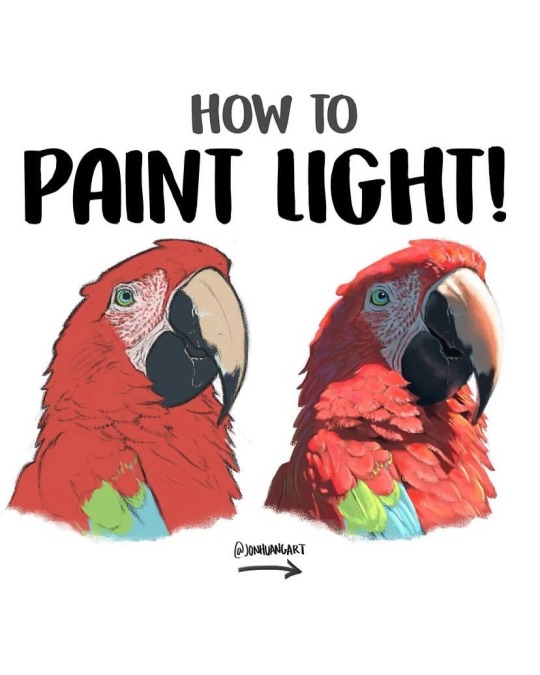
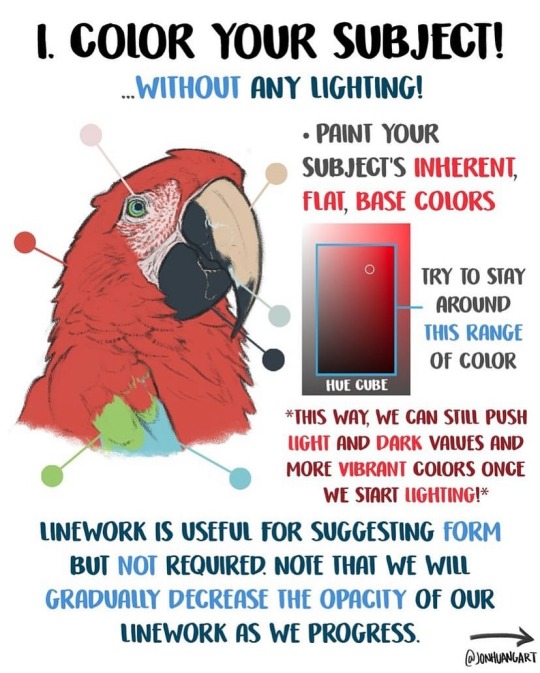
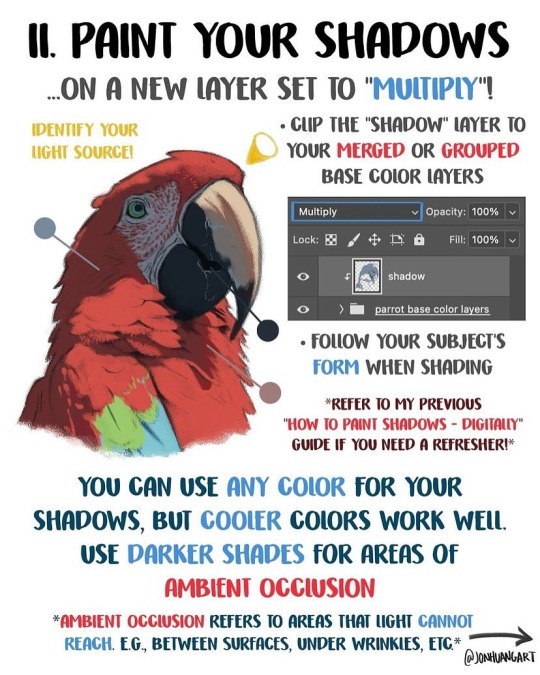
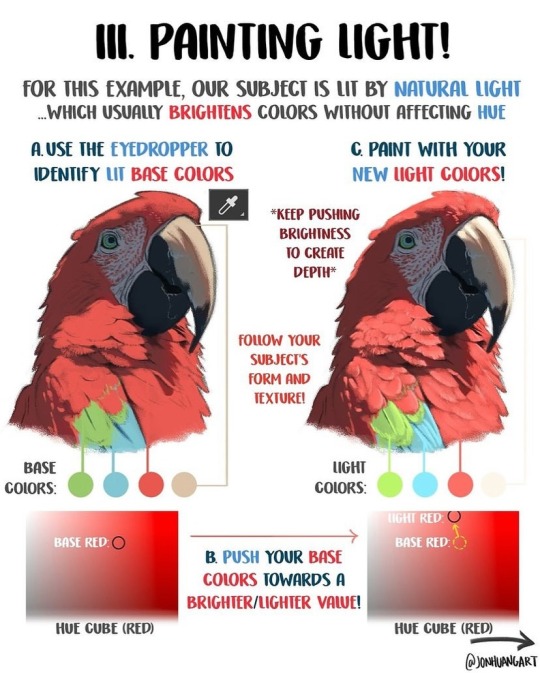
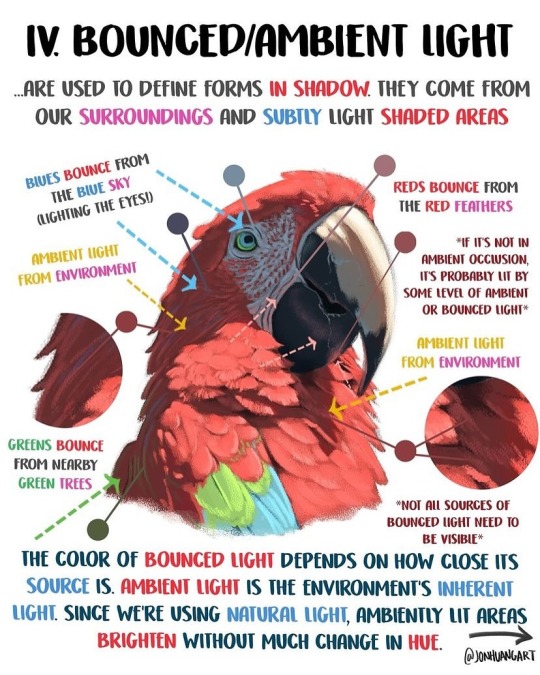

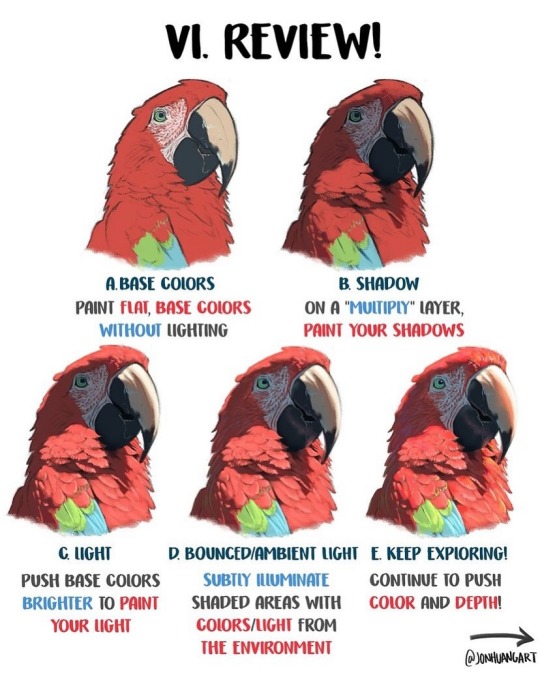
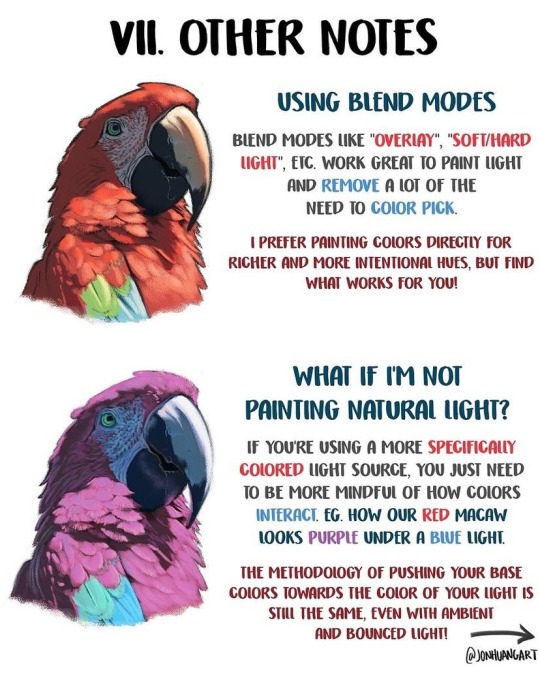
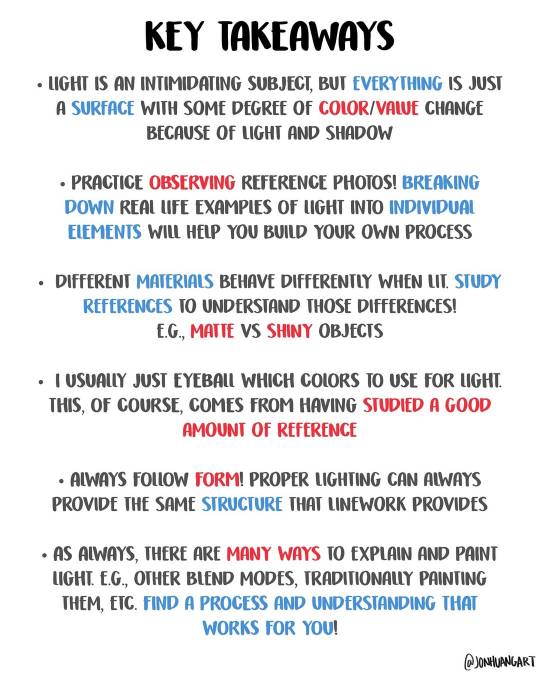
How to Paint Light by jonhuangart
34K notes
·
View notes
Text
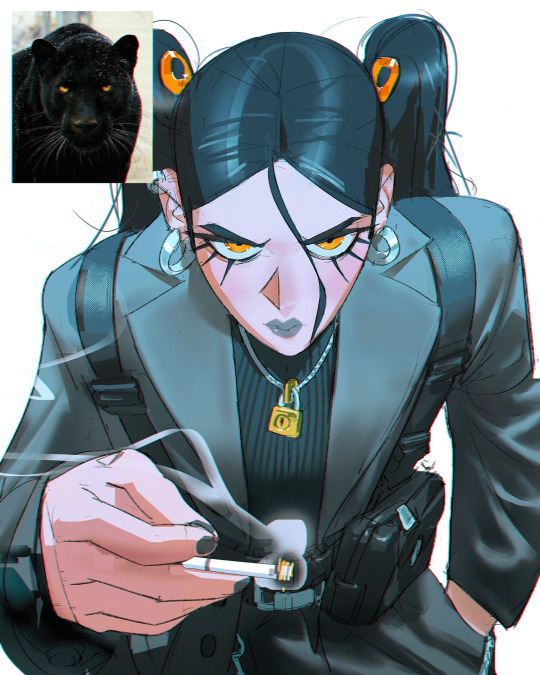
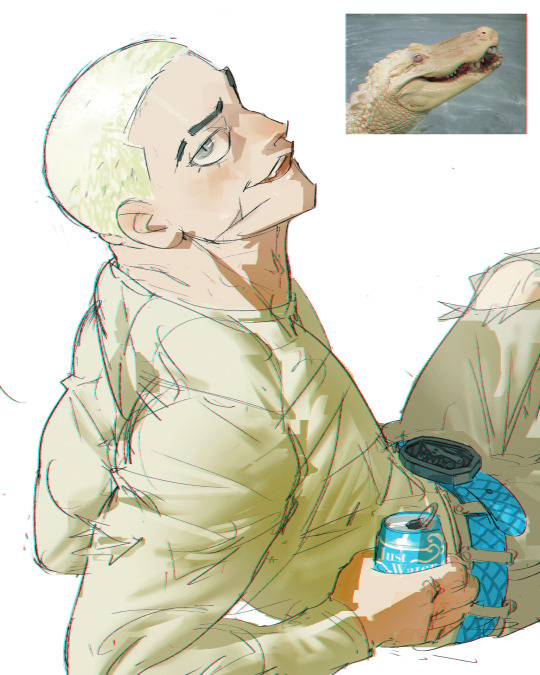
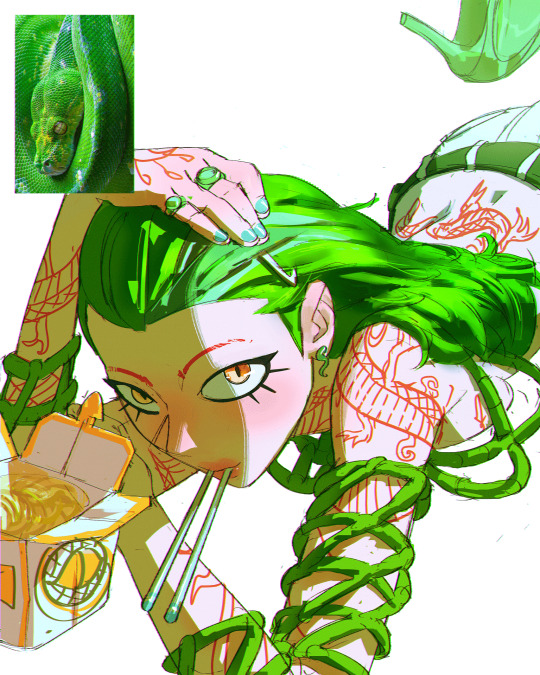
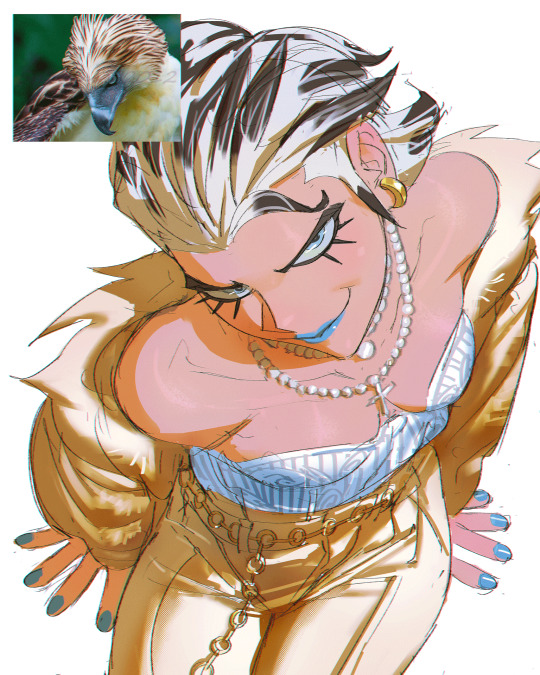
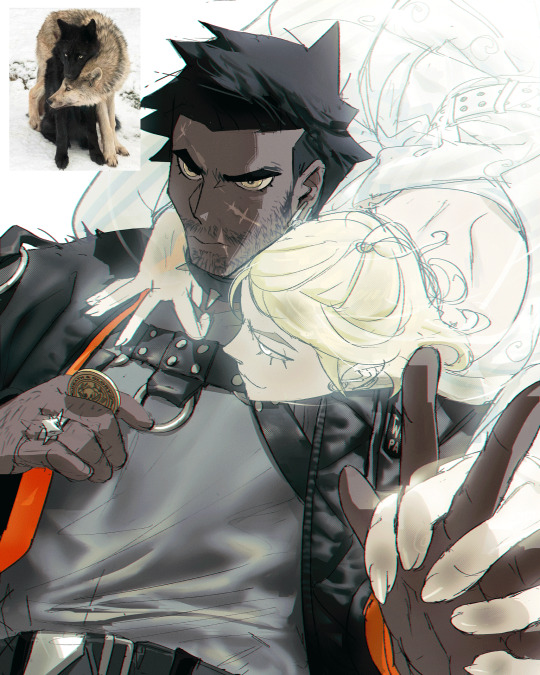
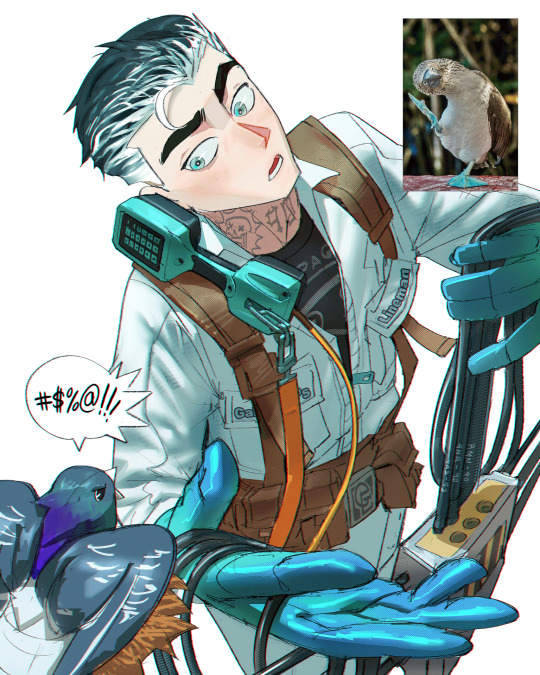
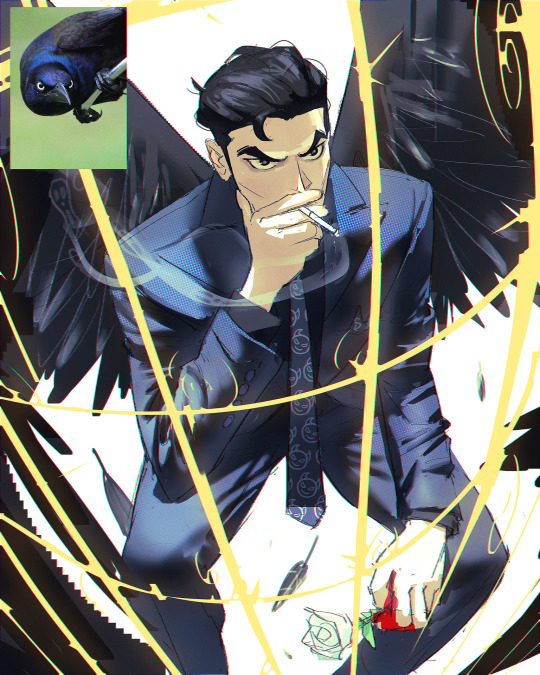
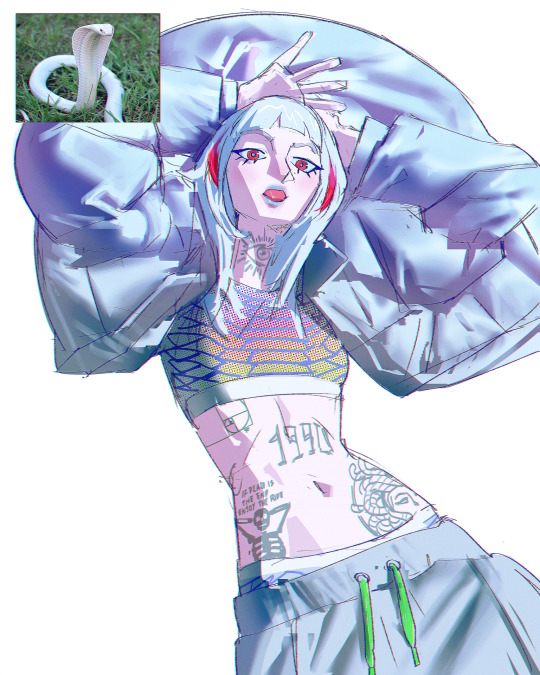
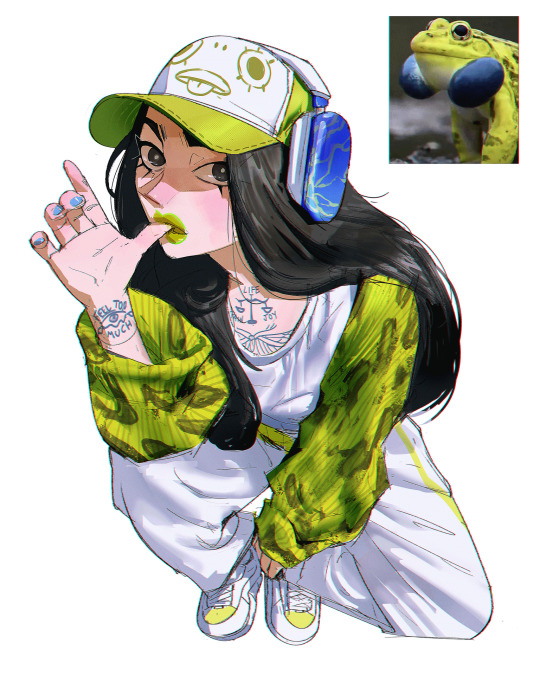

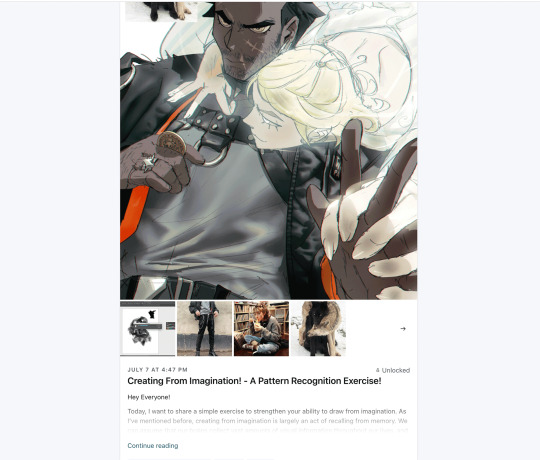

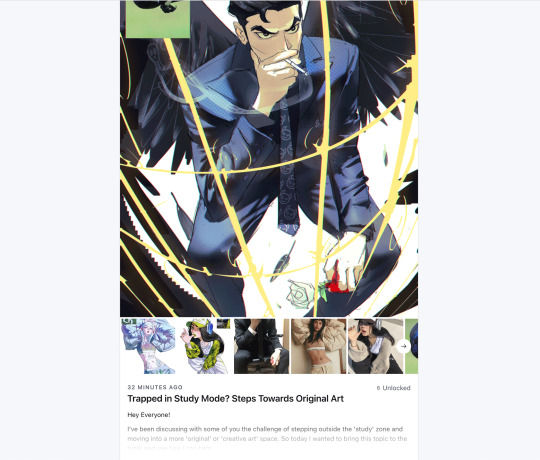
Get access to my brushes, art tips, process videos, and files here https://www.patreon.com/ramonn90
#illustration#ramonn90#art#photoshop#patreon#digital art#portrait#character design#brushes#game art#animeart#art fundamentals#tutorial#tips about art
2K notes
·
View notes
Text
Advanced Perspective Critique (+ tips & tricks)
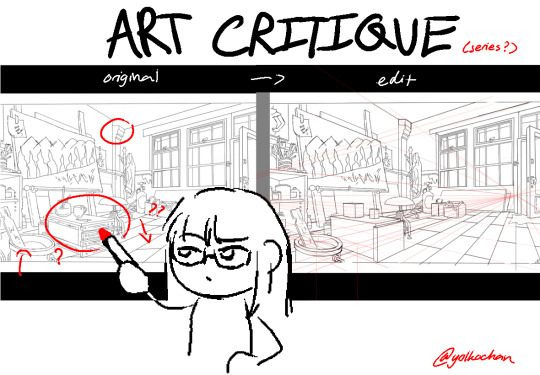
Original artwork submitted by @soleilonthesun
This is a large post critiquing (also perspective tips) this artwork submitted by one of my friends, I’m not a professional art teacher but I’m willing to share my knowledge with the internet :)
I will assume that you know the basics of perspective and will be moving on more advanced stuff. If you’d like me to critique your artwork, just send me a dm or an ask.
Some basic tips to start off with.
Use a small pen size so you can be more accurate with perspective.
Use the line tool if you are allowed to, don’t freehand this.
Always draw the horizon line first before you begin a perspective drawing and draw “outside” of the actual canvas since vanishing points are usually far outside of it if you want to do a close up of a building/room. You can enlarge your drawing area in later stages after you’re done sketching.
Try to draw within this safe area (rhombus) between the vanishing points (an acute angle, about 60-70 degrees). I recommend this because if you draw outside this area there will be extreme warping to the objects that you’re drawing.
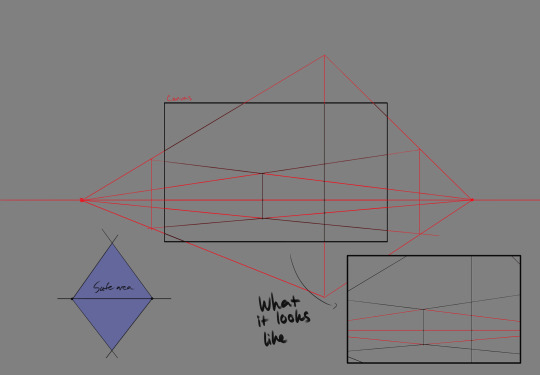
When I was trying to draw out the box of your room, I noticed that the edges of the room were outside of the vanishing points, causing this extreme type of warping — making it impossible to connect the edges of the room into a complete box. I think this may have happened due to you drawing the inner faces of the box first (which is risky) instead of the outer faces.
Drawing the outer faces first is the easiest way to draw a box in 2pp.


The first thing I noticed is how different the perspective of the floor is compared to the room so I tried finding the horizon line + vanishing points of the room (even though the perspective of the room itself is extremely warped in the first place lol). The floor will always be at the same vanishing point(s) as the room it’s in.
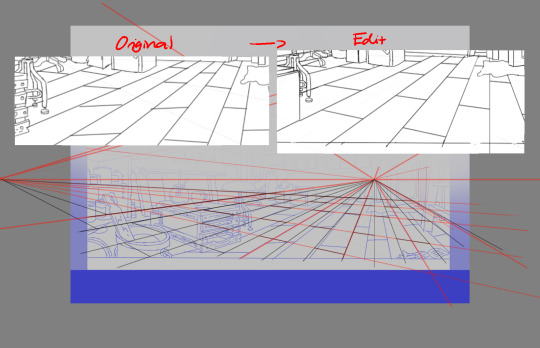
Tips on drawing objects inside rooms:
Objects on the floor/floating can be at different vanishing points compared to the room but they still have to be on the same horizon line. I see you attempted to do this with the bench here.
Objects attached to walls (posters, clocks, shelfs) must have their vanishing points the same as the room otherwise it will not look like it’s attached to the wall. (This also applies to hinging doors and physically hanging items attached to the ceiling like chandeliers)
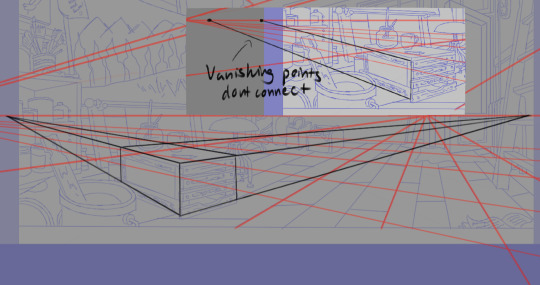
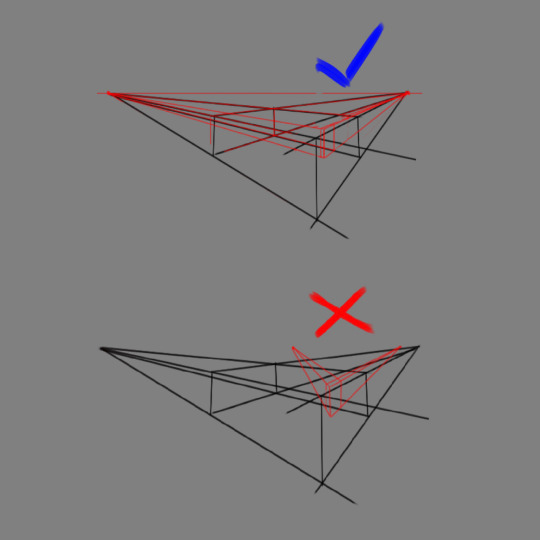
One of the things I changed was the pillar since it seemed like it wasn’t touching the ceiling properly even before I adjusted the walls edges to fit the perspective. Even though the edited pillar now technically fits the perspective in the edit, the front side of the pillar being parallel to the viewer’s eyes can be off-putting since pillars aren’t normally constructed like that (they’re mainly always cuboids or cylinders) — so I also made another alternative edit.

Ellipses in perspective is particularly too complex to explain in one post but the main thing about it is that it will ALWAYS stay a perfect ellipse no matter the orientation (assuming there’s no extreme warping or curvilinear perspective) — it will never turn into an oval like this. Practicing and drawing cylinders will help you break off this habit. I reconstructed this bucket in particular to fit in with the perspective better.

This video by @drawsh and infographic explains it way better than me.
Here is also another video by @stanprokopenko that explains how to draw a cylinder easily.

Final edit

End note
Obviously I can’t change everything in this drawing but I hope I made the perspective less inconsistent for you. To get better at perspective (or well anything really), you just need to practice it more, drawing more backgrounds and objects and such — you’ll improve very quickly. I saw that you put in a lot of detail into this drawing and I was really impressed!
But since this was a perspective assignment, you may have gotten not so great grades due to the inaccuracy. When it comes to perspective, you have to be strict with yourself and try not to “guess” stuff. I recommend drawing less detailed backgrounds as practice more often. I hope this explanation and critique helps you on your art journey :) (and also better grades lol)
#🍳.art#artists on tumblr#artist support#perspective#art tutorial#art tips#art critique#digital art#my art#illustrators on tumblr#animation#art criticism#digital artist#small artist#art guide#art fundamentals#concept art#art help#2d animation
63 notes
·
View notes
Text
Little tribute to Mushi-Shi, one of the only anime series I've thoroughly enjoyed in over a decade as an old person 🥲 also practicing a different value/contrast study than my usual stuff so this.... was a struggle.

143 notes
·
View notes
Text
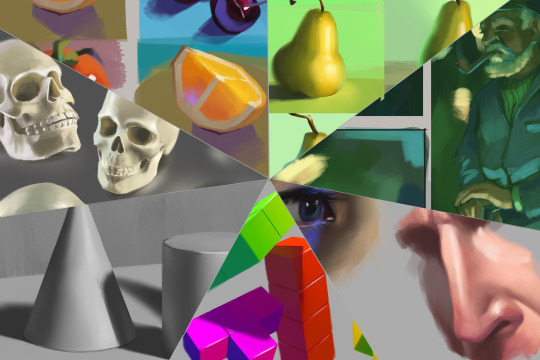
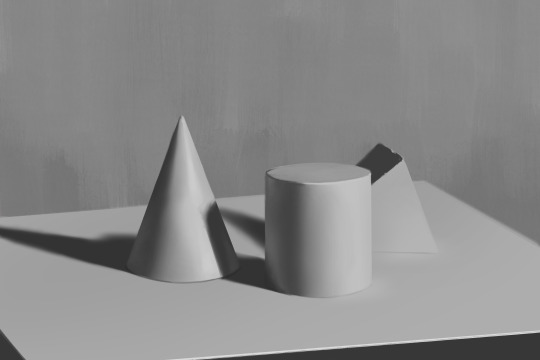
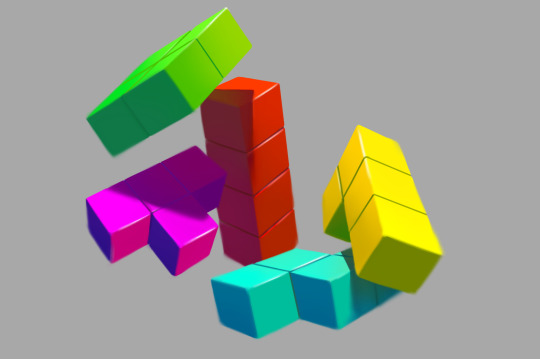
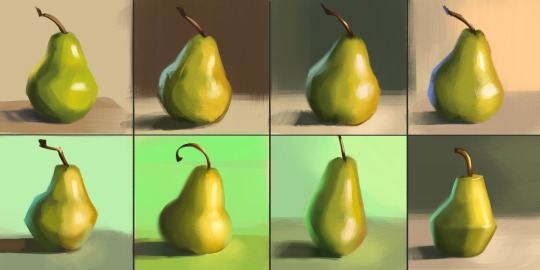


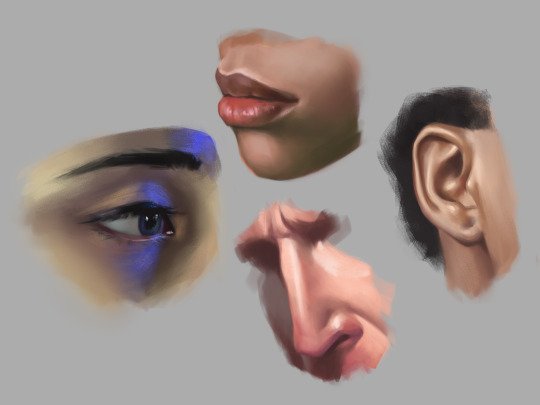

Study!!!!
#art study#art practice#art#meds map#digital art#painting#art fundamentals#anatomy#color study#portraiture#still life
13 notes
·
View notes
Text

No idea how much this interests people, but here are some older construction studies!
#artists on tumblr#small artist#digital art#art#art study#art fundamentals#sketches#studies#human form#my artwork#backlog#2021 tag
18 notes
·
View notes
Text
Learning to draw anatomy is not a beginner skill.
I repeat:
Learning. To. Draw. Anatomy. Is. NOT. A. Beginner. Skill
Drawing anatomy is made up of other fundamental skills that support efficient and sustainable drawing technique and practice. Fine tuning one's hand with the general fundamentals is a surefire way to improve one's ability to draw anything.
[this has been a PSA from someone who's beyond done with being stuck in a rut because healing their trauma yeeted their abilities]
#art tip#drawing tip#art fundamentals#fundamentals are key#back to basics#relearning from scratch#i just wanna draw again#rants with woodpengu#art#drawing#anatomy#drawing anatomy
37 notes
·
View notes
Text
Brush Stroke Techniques Everything a Beginner Needs to Know and nobody tells you #7 The Art Sherpa
18 notes
·
View notes
Text

Hi guys!
I've decided I wanted to improve my art, and began practicing more while also learning fundamentals. I'll show the process here. Everything will be a sketch, but hopefully when summer break starts, I'll have more time for painting with watercolours.
Have a nice day/evening!
Bye-bye <3
#art#artwork#practice#art practice#beginner artist#art study#art fundamentals#drawing#doodle#sketch#learning artist#traditional art#traditional drawing#sketching
13 notes
·
View notes
Text
Art tutorial: Why people say to understand reality before you draw stylized things and how to actually translate reality to fiction (it's easier than it sounds!)
I'm really proud of how this turned out :3c this is my first art tutorial in this style so I really hope you guys will like it and find it helpful! If theres anything anyone else wants me to teach just ask or if theres a point you want some more elaboration on just ask!
youtube
#artblr#art#art tutorial#digital art#art fundamentals#realisim#stylization#stylized art#anime#managa#how to draw anything#art tumblr#art blog#small artist#small youtuber#anime style#anime art#how to#tutorial#anime tutorial#Youtube
11 notes
·
View notes
Photo

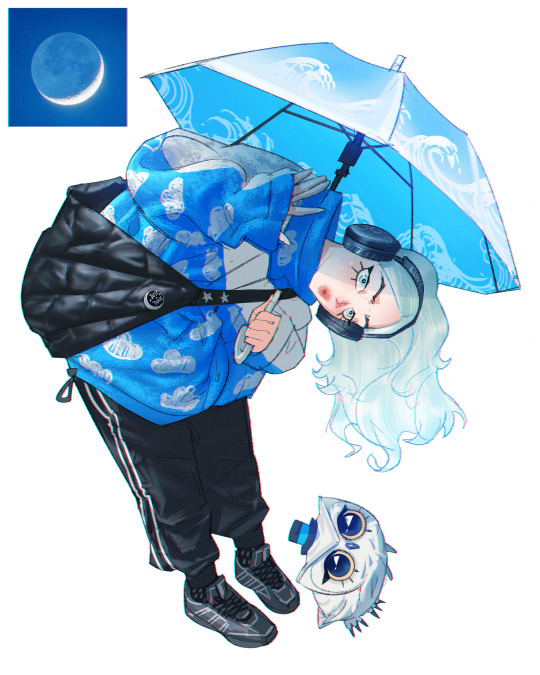
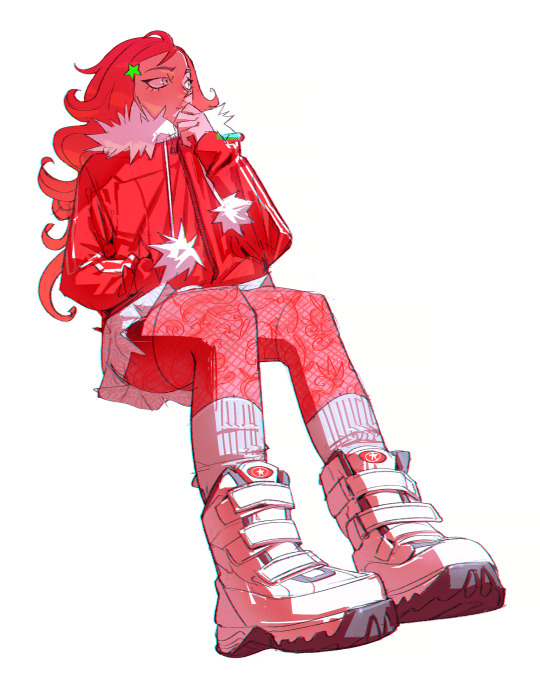
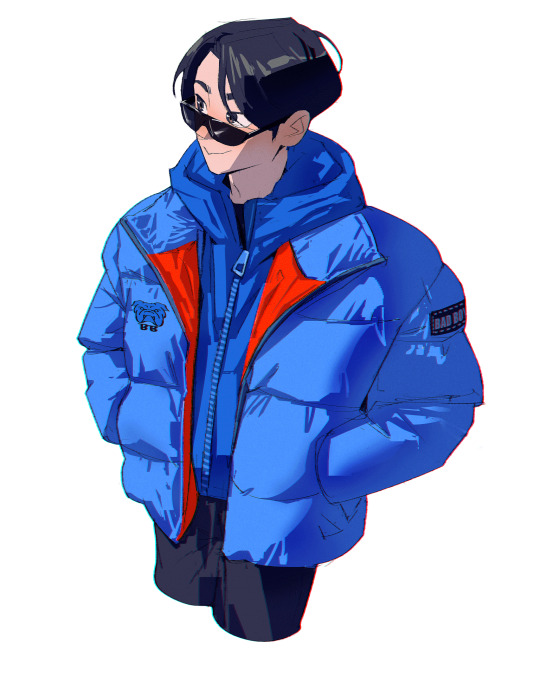

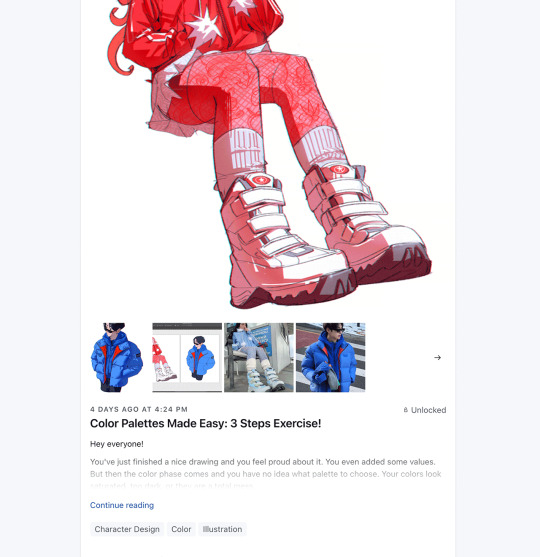
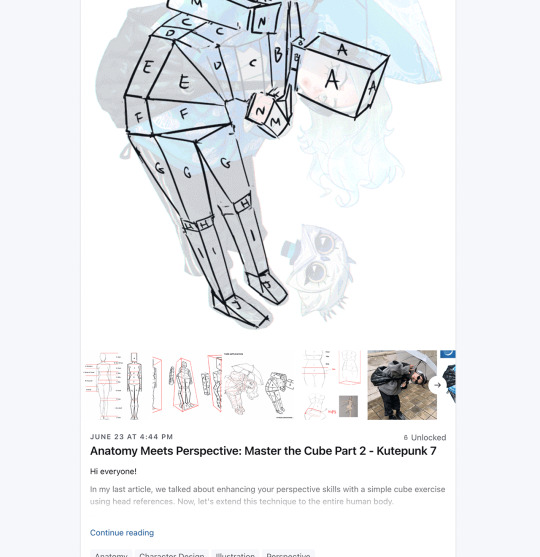
Get access to my brushes, process videos, and files here https://www.patreon.com/ramonn90
#fashion#anime#character design#illustration#color#values#lighting#shadows#art fundamentals#tutorial#digital art#drawing#brushes#photoshop brushes#ramonn90#ramon nunez art#arte#patreon#tips about art#tips about digital art
531 notes
·
View notes
Text
Every novice artist has a different aim in mind.
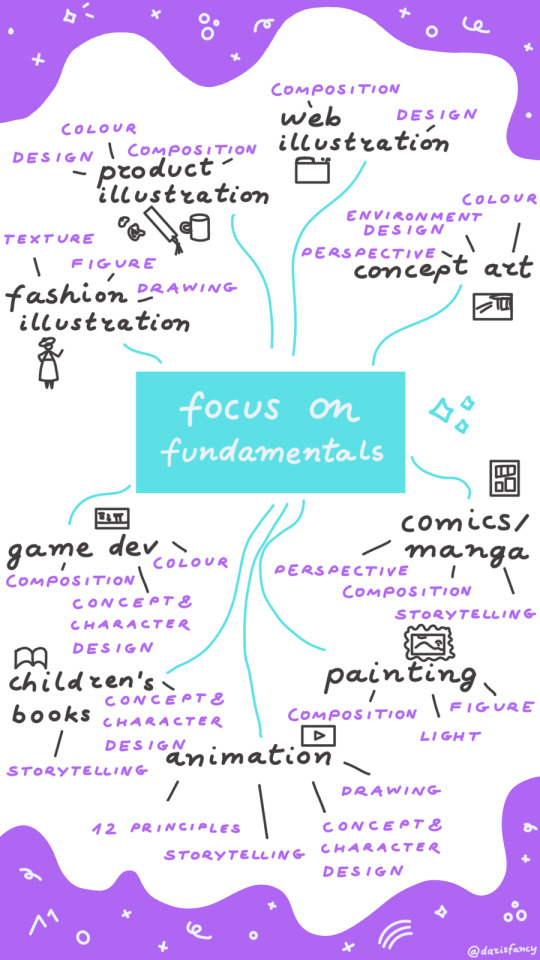
Since there are a lot of fundamentals to learn, it is smart to make some a priority.
Here is a hopefully helpful infographic that you can use as a starter point in your art journey.
12 notes
·
View notes
Text
Deconstructing Compositions (Art Guide)

This guide will definitely be expanded on, I barely got to cover half of the important stuff! Available to Patrons starting at €5 🌟💕
#art#artists on tumblr#digital art#artist#patreon tutorial#art tutorials#art guide#guide#composition#art fundamentals#educational#art advice
6 notes
·
View notes
Note
Teach me how to speed draw I mean I'm unable to finish even a simple sketch in 2 hours...
The secret of being able to draw "fast" comes down to routine and experience. I've worked in a professional environment where I learned fundamentals of efficient work. However, no matter what your skill level is, you can always start practicing.
In my opinion, the most important thing to remember is that sketches are supposed to be just quick scribbles of your ideas. In a professional environment, artists are encouraged to spend as little time in the early development phase. When you start designing characters for example, your first job is to create as many illustrated ideas in a very short time as possible. You shouldn't focus on details but shape language, silhouette and the general "story" you want your character to be able to tell visually.
To me it sounds like your general problem is that you spend too much time thinking how something "should look" or if your sketch is clean enough. Instead of that, try to focus on sketching the outer shape of the character. Here are some of my sketches I've made under a few minutes.
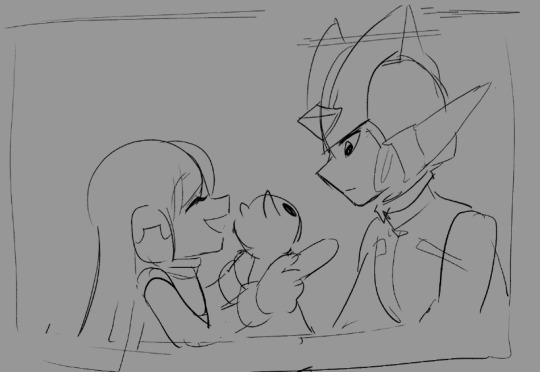
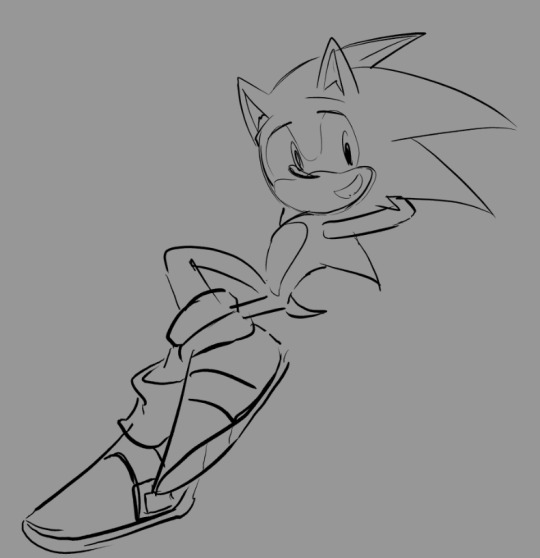
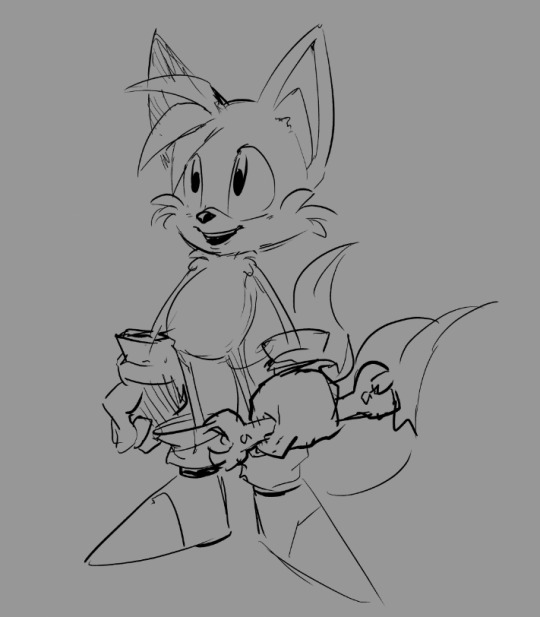
See? My sketches aren't the cleanest but they convey the message I want to bring. Instead of focusing too much on detail, I make sure the shape language and facial expressions are clear and easy to read. I personally suggest checking out the work of storyboard artists. I think learning about their working habits could help you learn how to spend less time on detail and rather put that effort into conveying the message you want your sketch to tell.
When you gain more experience, build your confidence and grow more familiar with your own style, your sketching habits start to become automatic and you don't need to put much thought process into it anymore. It all really comes down to experience. I've not always been fast at drawing. It took me years of practice to get where I am now and believe me or not, I'm STILL learning. It never stops. I'm still aiming to be even faster.
As a general note, being fast doesn't mean you're a good artist but it's a useful skill while working in a professional field. However, I personally admire artists who are able to pour hundreds of hours in a single painting. I could never be able to do that.
#anon#asks#art tutorial#kinda?#art fundamentals#efficient work habits#art tip#I'm just a junior artist but I think I'm still allowed to answer this#I hope it helped!
32 notes
·
View notes
